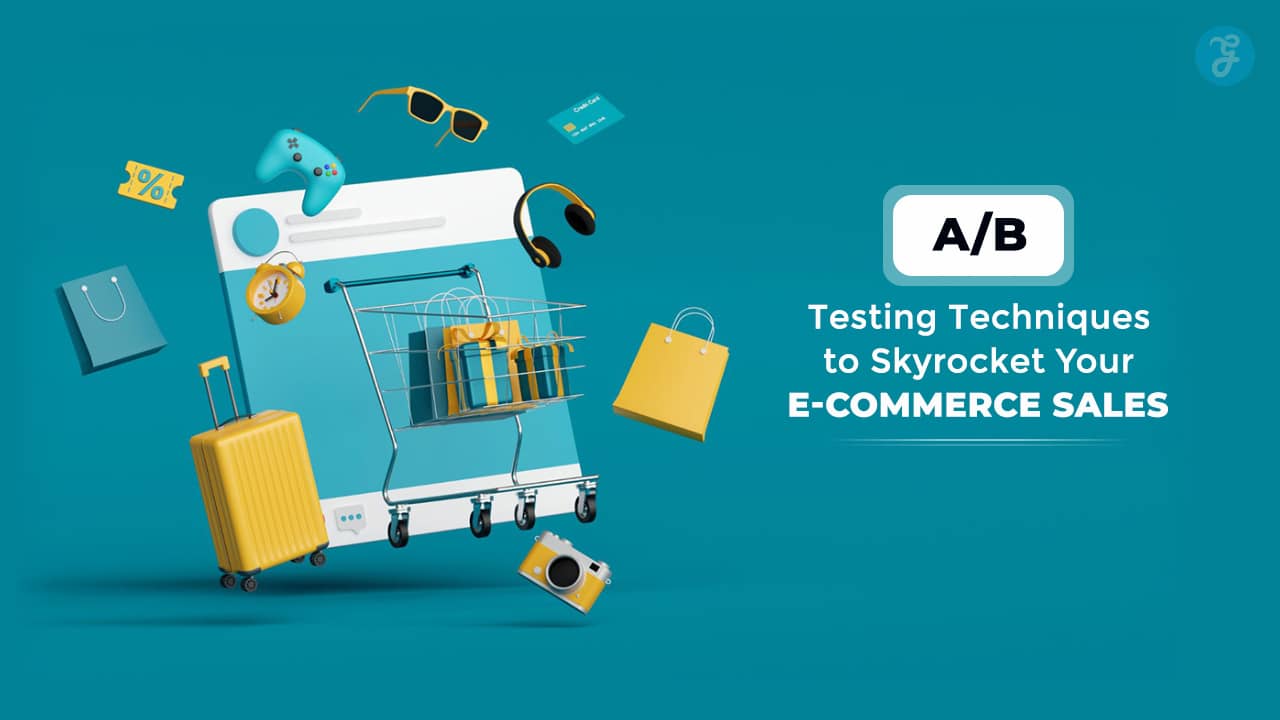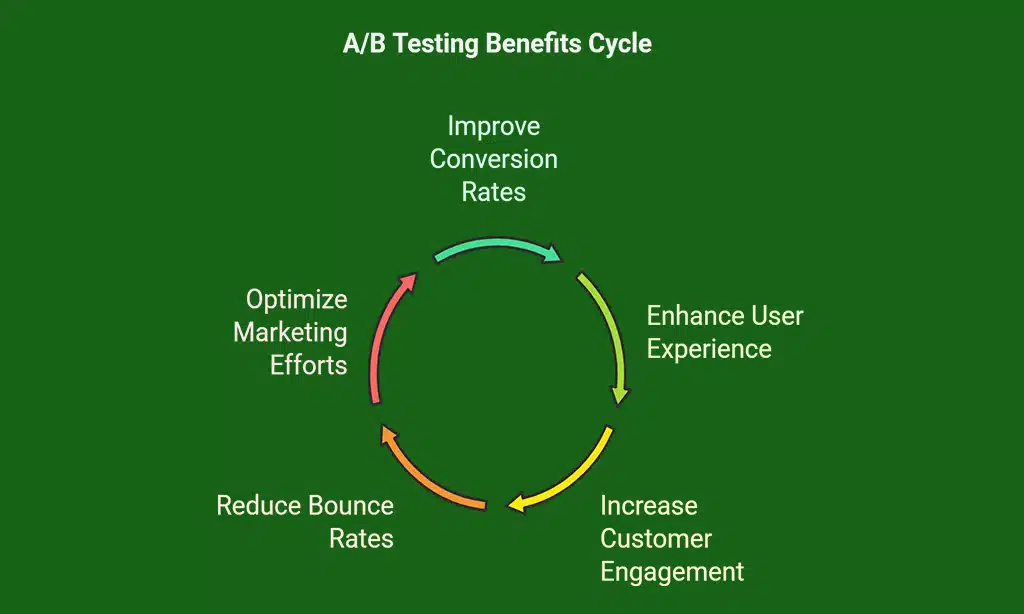In today’s highly competitive e-commerce landscape, businesses are constantly searching for ways to optimize their websites, increase conversions, and maximize revenue. One of the most effective ways to achieve these goals is through A/B testing.
A/B testing, also known as split testing, allows you to compare two different versions of a webpage, email, or advertisement to determine which one performs better. By leveraging data-driven insights, businesses can make informed decisions that lead to higher sales and improved user experience. This method is widely used by e-commerce giants such as Amazon and Shopify to enhance their platforms, ensuring a seamless shopping experience for users.
In this article, we will explore 5 A/B Testing Techniques for Your E-commerce Sales, helping you optimize your store for maximum success. These techniques focus on enhancing different aspects of the user journey, ensuring you convert more visitors into loyal customers.
Understanding A/B Testing in E-commerce
A/B testing involves testing two variations (A and B) of a web page, email, or digital ad to determine which version yields better performance. By systematically testing different elements, businesses can:
- Improve conversion rates
- Enhance user experience (UX)
- Increase customer engagement
- Reduce bounce rates
- Optimize marketing efforts
According to a study by HubSpot, businesses that use A/B testing see an average conversion rate improvement of 49%. This method enables brands to make data-backed decisions rather than relying on assumptions.
How A/B Testing Can Increase Conversions and Sales
E-commerce businesses benefit significantly from A/B testing by:
- Identifying the most effective design, content, and layout for product pages
- Optimizing call-to-action (CTA) buttons to encourage clicks and purchases
- Reducing cart abandonment by streamlining the checkout process
- Personalizing user experiences to drive higher engagement
- Enhancing email and ad campaigns for better click-through rates (CTR)
Key A/B Testing Metrics to Track
| Metric | Description |
| Conversion Rate | Percentage of users who complete a desired action |
| Bounce Rate | Percentage of users who leave without taking action |
| Click-Through Rate (CTR) | Percentage of users who click on a CTA or link |
| Cart Abandonment Rate | Percentage of users who abandon their cart before purchase |
5 Proven A/B Testing Techniques for E-commerce Growth
A/B testing is a powerful tool that allows e-commerce businesses to make data-backed improvements, leading to higher conversions and sales. By testing different elements of your store, you can understand what works best for your audience and refine your strategies accordingly. Below, we explore five key A/B testing techniques to enhance your e-commerce growth.
1. Optimizing Product Pages for Higher Engagement
Your product pages play a crucial role in driving conversions. These pages serve as the final step before customers make a purchase, making it crucial to optimize every element for maximum engagement. A/B testing different aspects of product pages allows businesses to understand what resonates most with their audience, leading to higher conversion rates and increased sales. From compelling product descriptions to visually appealing images and strategic pricing displays, every detail can influence customer decisions.
Testing Product Descriptions and Images
Product descriptions and images are the backbone of an effective product page. Testing different variations helps determine the best way to present information to your audience.
- Compare long vs. short product descriptions: Some users prefer detailed specifications, while others respond better to concise, benefit-driven copy.
- Test different writing styles: A/B test storytelling descriptions vs. technical, feature-driven text to see which improves engagement.
- Experiment with high-quality images vs. minimalistic visuals: High-resolution images can build trust, while minimalistic visuals may create a cleaner browsing experience.
- Use interactive elements: 360-degree views and zoom-in functionality can improve customer confidence.
| Test Element | Impact on Sales |
| High-resolution images | Increases trust and engagement |
| Video demonstrations | Helps users understand product usage |
| Concise vs. detailed descriptions | Varies by audience preference |
| 360-degree product view | Enhances customer confidence |
| Lifestyle images vs. standard images | Creates emotional connection with users |
Price and Discount Display Variations
Pricing strategies and discount displays can heavily influence purchasing behavior. Optimizing how prices and discounts are presented can encourage more conversions.
- Show original price vs. discounted price placement: Highlighting discounts prominently can create urgency.
- Test different formats for displaying discounts: Compare “20% off” vs. “Save $10” to determine what appeals more to customers.
- Experiment with urgency-driven elements: Countdown timers and limited-time offers can drive quick decision-making.
- Bundle pricing vs. individual item pricing: Offering bundled deals can increase average order value.
| Pricing Strategy | Effect on Conversions |
| Strikethrough original price | Increases perceived value of discount |
| Percentage-off discounts | More effective for larger discount amounts |
| Dollar-off discounts | Works well for lower-priced items |
| Time-limited offers | Creates urgency and boosts impulse purchases |
| Bulk discounts | Encourages higher order quantities |
By systematically testing and refining these elements, businesses can create highly optimized product pages that drive more sales and enhance the customer shopping experience.
2. Enhancing Call-to-Action (CTA) for Better Click-Through Rates
A compelling CTA can encourage visitors to take action. A/B testing different CTA elements can make a significant difference. Many successful e-commerce stores have reported a notable increase in conversions simply by tweaking their CTA buttons and messaging. Studies suggest that a well-optimized CTA can improve click-through rates (CTR) by up to 35%, making it an essential element for boosting sales and user engagement.
Button Color, Size, and Placement Testing
The visual appeal and strategic placement of a CTA button can heavily impact user behavior. Testing variations ensures maximum engagement and higher conversions.
- Test red vs. green vs. blue CTA buttons
- Experiment with different button sizes (small, medium, large)
- Compare CTA placement (above the fold vs. below the fold)
- Test bold vs. subtle color contrasts
- Analyze the impact of animated vs. static buttons
| CTA Attribute | Impact on Engagement |
| Bold contrasting colors | Increases visibility and attention |
| Larger buttons | Enhances clickability |
| Above-the-fold placement | Boosts immediate interaction |
| Animated effects (e.g., hover state) | Encourages engagement |
Action-Oriented vs. Passive CTA Text
The wording of your CTA plays a vital role in influencing user decisions. A direct, action-oriented CTA can drive urgency and lead to more conversions.
- “Buy Now” vs. “Shop Today and Save”
- “Get Started” vs. “Start Your Free Trial”
- “Claim Your Discount” vs. “Save Now”
- “Limited Offer – Grab Yours!” vs. “Explore More”
- “Subscribe and Get 20% Off!” vs. “Sign Up Here”
| CTA Variation | Engagement Impact |
| “Buy Now” vs. “Shop Today and Save” | Creates urgency |
| “Get Started” vs. “Start Your Free Trial” | Encourages immediate action |
| “Claim Your Discount” vs. “Save Now” | Boosts perceived value |
| “Limited Offer – Grab Yours!” vs. “Explore More” | Drives fear of missing out (FOMO) |
| “Subscribe and Get 20% Off!” vs. “Sign Up Here” | Incentivizes user action |
A/B testing these elements over time can provide invaluable insights into user preferences, allowing businesses to refine their CTAs for maximum conversions.
3. Improving Checkout Process for Reduced Cart Abandonment
The checkout experience can make or break a sale. Optimizing this process through A/B testing ensures fewer customers abandon their carts. Studies show that nearly 70% of online shoppers abandon their carts before completing a purchase. By implementing strategic A/B testing, businesses can identify friction points and make data-driven improvements that enhance the checkout flow, leading to increased sales and customer satisfaction.
Single-Step vs. Multi-Step Checkout Testing
The checkout process should be designed to minimize friction while capturing essential customer details. Testing different approaches can help businesses determine the most effective structure for their audience.
| Checkout Type | Pros | Cons |
| Single-Step Checkout | Faster process, reduces drop-offs | May overwhelm users with too many fields |
| Multi-Step Checkout | Organized, collects data in stages | Users might abandon midway |
| Accordion-style Checkout | Presents all steps on one page | Can be complex on mobile devices |
| Express Checkout (e.g., PayPal, Apple Pay) | Quick and convenient for returning users | Requires third-party integrations |
Guest Checkout vs. Mandatory Account Creation
Many customers prefer a hassle-free checkout experience. Forcing users to create an account may deter first-time buyers. A/B testing can help determine the best approach for maximizing conversions.
- Test whether requiring users to create an account affects conversion rates: Some businesses see increased customer retention when accounts are created, but others experience higher abandonment rates.
- Offer social login options and assess their impact: Enabling login via Google, Facebook, or Apple can streamline the process and enhance user convenience.
- Experiment with incentives (discounts, free shipping) for account creation: Encouraging sign-ups with perks can boost loyalty without increasing friction.
- Analyze drop-off points in the account creation process: Identify where users hesitate and optimize form fields or offer progress indicators.
| Checkout Feature | Effect on Conversions |
| Guest Checkout | Increases conversion rates for new customers |
| Social Login | Reduces login friction and improves speed |
| Account Creation Incentives | Encourages long-term customer retention |
| Autofill Form Fields | Enhances user convenience and reduces input errors |
Optimizing the checkout process through these A/B testing strategies ensures a seamless and user-friendly experience, ultimately leading to higher conversion rates and improved customer satisfaction.
4. Personalization and User Experience (UX) Optimization
Personalization enhances the shopping experience by delivering tailored content based on user behavior. By analyzing customer preferences, browsing history, and past purchases, businesses can create highly relevant shopping experiences that drive conversions and customer loyalty. Studies show that personalized shopping experiences can increase revenue by up to 20%, making A/B testing an essential strategy to optimize these efforts.
A/B Testing Dynamic Content Recommendations
Personalized recommendations influence customer purchasing decisions and can significantly boost sales. Through A/B testing, businesses can determine which recommendation strategies work best for their target audience.
- “Customers also bought” vs. “You may like these”
- Displaying bestsellers vs. trending products
- Testing AI-driven product recommendations
- Offering product bundles vs. standalone item suggestions
| Personalization Feature | Effect on Sales |
| Personalized product recommendations | Increases average order value |
| Location-based offers | Boosts localized engagement |
| AI-driven search results | Enhances user experience |
| Cross-selling techniques | Increases multiple-item purchases |
Navigation Menu and Homepage Layout Testing
The navigation menu and homepage layout play a critical role in user engagement and site navigation. A/B testing these elements can help optimize usability and ensure customers find what they need efficiently.
- Vertical vs. horizontal navigation menus
- Grid vs. list product display formats
- Homepage with featured products vs. category-based layout
- Testing different banner placements for promotional content
| Navigation Element | Effect on User Engagement |
| Simplified navigation | Reduces bounce rates |
| Featured product carousels | Increases product visibility |
| Prominent search bar | Enhances user accessibility |
| Personalized homepage layout | Improves user retention |
5. Email and Ad Campaign A/B Testing
Optimizing your marketing efforts through A/B testing can drive higher engagement and sales. By experimenting with different marketing components, businesses can identify what resonates best with their target audience. This process helps refine messaging, improve click-through rates, and ultimately increase conversions. According to recent studies, A/B testing email subject lines alone can boost open rates by up to 47%.
Subject Line Variations and Open Rate Analysis
A well-crafted subject line can determine whether an email gets opened or ignored. Testing different subject line styles helps optimize email engagement.
- Personalized subject lines vs. generic ones
- Including emojis vs. text-only subject lines
- Short vs. long subject lines
- Using urgency-driven phrases (“Limited Time Offer!” vs. “Check This Out”)
- Question-based vs. statement-based subject lines
| Subject Line Type | Impact on Open Rate |
| Personalized (“John, Your Special Offer Awaits!”) | Higher engagement |
| Emoji-based ( Hot Deals Inside!) | Can attract more attention |
| Short (“Flash Sale Today!”) | Works well for mobile users |
| Urgency-driven (“Hurry! Last Chance to Save”) | Encourages immediate action |
Ad Copy and Landing Page Consistency Testing
Ad copy and landing pages must align to provide a seamless experience. Mismatched expectations can lead to high bounce rates and lost conversions.
- Testing benefit-driven vs. feature-driven ad copy
- Assessing the impact of headlines on conversion rates
- Matching ad visuals with landing page elements
- Testing video-based vs. text-based landing pages
- Experimenting with social proof elements (customer reviews, testimonials)
| Ad Copy Strategy | Effect on Conversion |
| Benefit-driven messaging (“Save Time & Money Today!”) | Higher customer interest |
| Feature-driven messaging (“Includes AI-powered insights”) | Appeals to tech-savvy users |
| Video-based landing pages | Can boost engagement and retention |
| Testimonials and social proof | Builds trust and credibility |
Takeaways
By implementing these 5 A/B Testing Techniques for Your E-commerce Sales, you can optimize your online store, improve user experience, and drive higher revenue.
A/B testing is an ongoing process. Regularly test, analyze, and refine your strategies to stay ahead in the competitive e-commerce space.
Tools and Resources for A/B Testing Success
- Google Optimize – Free tool for A/B testing web elements
- Optimizely – Advanced A/B testing and experimentation platform
- VWO (Visual Website Optimizer) – User-friendly A/B testing tool for marketers
- Crazy Egg – Heatmaps and user behavior tracking for website optimization
By leveraging these tools and implementing the insights from this article, you can effectively use A/B testing to enhance your e-commerce sales and customer engagement. Start testing today and watch your sales soar!












































